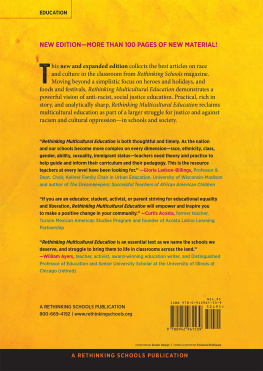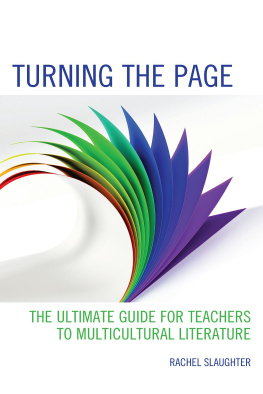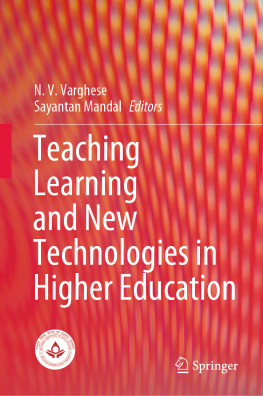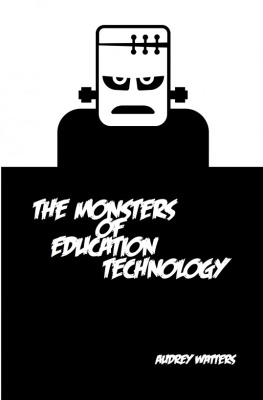Silent Partners in Multicultural Education
A Volume in Research in Multicultural Education and International Perspectives
Series Editor
Fred Dervin University of Helsinki, Finland
Research in Multicultural Education and International Perspectives
Fred Dervin, Editor
Silent Partners in Multicultural Education (2016)
edited by Tuija Itkonen and Fred Dervin
Growing Up Between Two Cultures: Issues and Problems of Muslim Children (2014)
edited by Farideh Salili and Rumjahn Hoosain
Democracy and Multicultural Education (2010)
edited by Farideh Salili and Rumjahn Hoosain
Culture, Motivation and Learning: A Multicultural Perspective (2007)
edited by Farideh Salili and Rumjahn Hoosain
Religion in Multicultural Education (2006)
edited by Farideh Salili and Rumjahn Hoosain
Language in Multicultural Education (2005)
edited by Farideh Salili and Rumjahn Hoosain
Teaching, Learning, and Motivation in a Multicultural Context (2003)
edited by Farideh Salili and Rumjahn Hoosain
Multiple Competencies and Self-Regulated Learning: Implications for Multicultural Education (2002)
edited by Farideh Salili, Ying-yi Hong, and Chi-yue Chiu
Multicultural Education: Issues, Policies, and Practices (2001)
edited by Farideh Salili and Rumjahn Hoosain
Silent Partners in Multicultural Education
edited by
Tuija Itkonen and Fred Dervin
University of Helsinki, Finland

I NFORMATION AGE PUBLISHING, INC.
Charlotte, NC www.infoagepub.com
Library of Congress Cataloging-in-Publication Data
CIP record for this book is available from the Library of Congress http://www.loc.gov
ISBNs:978-1-68123-721-3 (Paperback)
978-1-68123-722-0 (Hardcover)
978-1-68123-723-7 (ebook)
Copyright 2017 Information Age Publishing Inc.
All rights reserved. No part of this publication may be reproduced, stored in a retrieval system, or transmitted, in any form or by any means, electronic, mechanical, photocopying, microfilming, recording or otherwise, without written permission from the publisher.
Printed in the United States of America
FOREWORD
Silvia Sasot
This very stimulating volume examines the links between silent partners and the idea of diversities. The plural form of the word diversity is in recognition of the multiple identities and representations within and between all individuals. As an architect involved in reflecting on school design, I often ask myself the following question: Does/can school architecture promote such pluralities?
As paradoxical as it may sound, school architecture is a loud and visible silent partner in education. The education of young people around the world mostly takes place in buildings specifically designed for it. The site itself represents the values considered important for the kind of education they receive.
There are deep patterns of thinking related to educational building design: classroom, corridors, table/chair, teacher desk, teacher room, and so on. There is a need to observe and problematize, both subjectively and objectively, the patterns of thinking that go into designing school buildings and educational spaces, as the paradigm related to school architecture is often quite conventional. Rather than attending to the diversifying of education, the predominant paradigm of school building design tends toward homogenization. For instance, the volume shows convincingly that the way space/place is discussed and performed in relation to internationalization can lead to students of certain origins being boxed into solid, often national, categories. Our global world asks for a radically different approach.
Architecture enables the production of social and economic power relations as well as the creation of the sc enography to perform roles and positions. Some countries, like Spain, have regulations on the ty pes and sizes of spaces that should be included in a building intended to serve as a school; the government creates institutional categories and sets forth policies on the design of educational sites. When school architecture is strongly regulated by the government, diversities are harder to reach and the thinking endorsed by the government easily gets reproduced. From an objective perspective, and in order to steer away from homogenization, it is necessary to define the key aspects of future learning environments. Learning environments should inspire, stimulate, and improve learning.
Power is also in the hands of designers and planners who do not necessarily always meet the users perceptions and experiences of space/place. When those using educational facilities are excluded from the design process, the site only represents the vision of the designers, educational managers, and decision makers. From a subjective perspective, it is important to involve all stakeholders within the educational community during the process, starting from subjective experiences and feelings.
As an architect who works with local school communities, I need to be open to listen to everybody as well as to embrace uncertainty. The creative process is a journey to discover new common destinies. When we aim at creating a kind of architecture that represents and recognizes multiple identities, dialoguing with the educational community is the key point. To create a school architecture that promotes pluralities, all voices should be included in the design process. The 1999 Convention on the Rights of the Child Article 12 (see http://www.unicef.org/cbsc/files/Articles12-13-17.pdf ) focuses on the childs opinions:
States Parties shall assure to the child who is capable of forming his or her own views the right to express those views freely in all matters affecting the child, the views of the child being given due weight in accordance with the age and maturity of the child.
Space and time are key elements in educational organizations. If we want to move away from conventional ways of thinking about school spaces, space/time aspects of the design process should be attended to together. Questions such as, Do all human beings relate to movement in the same way? need to be asked and addressed both from objective and subjective perspectives.
Teacher students and teacher educators need tools and skills to make use of extended learning spaces beyond the classroom. Teacher education could provide experimental sites for teacher students to practice performing as teachers in different places/spaces. Teacher students need to creatively explore spaces as teaching/learning tools in order to avoid reproducing paradigms that work behind the scenes in teacher education.
Architecture is always a silent partner everywhere. The exploration of educational paradigms is enlarged when architecture is included in the discussions. With this superbly edited book, the editors and the authors have initiated the task of compiling an exciting resource for reflecting on the influence of space/place, objects, and technologies in education. They have also opened up exciting new vistas on diversities and multiculturalism in education.
INTRODUCTION
Fred Dervin and Tuija Itkonen
Objects should not touch because they are not alive. You use them, put them back in place, you live among them: they are useful, nothing more. But they touch me, it is unbearable. I am afraid of being in contact with them as though they were living beasts.
Sartre (1938/1949, p. 14)
OBJECTOPHILIA IN TODAYS RESEARCH









